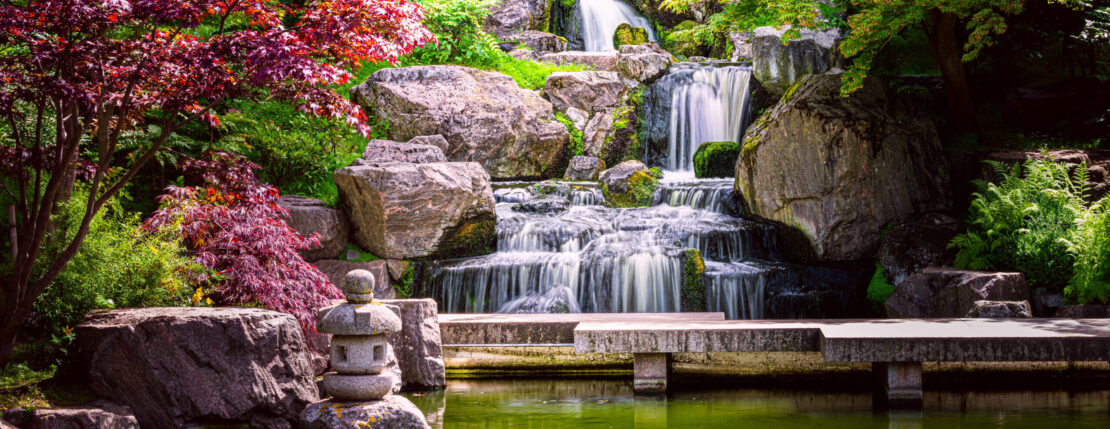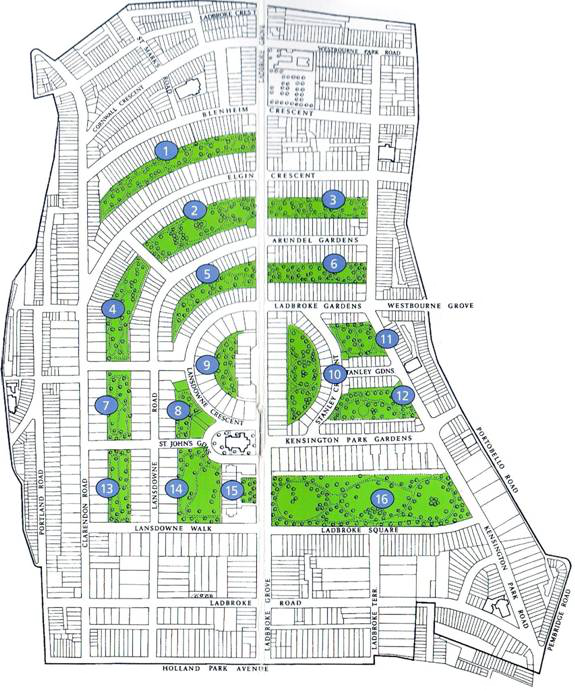A walk in the park

West London is often celebrated as much for its abundance of gardens and parks as for its vibrancy. Now that the warmer weather and longer days are upon us there’s no better time to venture outdoors and explore the green spaces that dot the landscape surrounding our offices in Notting Hill, Kensington and North Kensington. One of the greatest appeals of searching for a home in Notting Hill is the opportunity to secure something with access to the amazing communal gardens which featured so highly all those years ago in Richard Curtis’s well-loved movie ‘Notting Hill’.

Nestled between Kensington and Notting Hill, Holland Park is a wonderful escape from the urban hustle. Meander through its winding pathways and discover the remnants of Holland House, a Jacobean mansion once the headquarters of the Whig party, and a striking reminder of the park’s rich heritage. The house was bombed in 1940, and the parts that remain are the backdrop for the open-air theatre, home to Opera Holland Park. The park is a haven for animal life and now boasts a great Ecology Centre. The outstanding Japanese Kyoto Garden is a joy throughout the seasons and the park is dotted with modern sculptures to off-set the green backdrops. Sean Henry’s bronze sculpture ‘Walking Man’ has been a permanent installation since 1998 and gives a very relevant modern injection to the otherwise more classical statues from the 18th and 19thcenturies. There are tennis courts, playgrounds and sports fields as well as the amazing open air opera house. At the heart of the park is a wonderful café, an ice-cream kiosk and the Belvedere restaurant offers the option of high dining with views of the park.

These extraordinary gardens, dreamt up by Queen Caroline in the 18th century as part of Kensington Palace, are open to us all to enjoy. Historic avenues of trees and blossoming flower walks have been the inspiration of writers and artists over the years but for the majority of us just offer up a place of refuge from the bustle of life and the London streets. The most famous resident is the Peter Pan statue which sits down by Long Water keeping company with the ducks and swans. As you wander throughout the park you will discover the beautiful Albert Memorial, the iconic Italian Gardens and the Princess Diana Memorial Playground with its wooden pirate ship. There are wild flower meadows allowing biodiversity to flourish alongside breathtaking veteran trees.

Once part of the larger Wormwood Scrubs, Little Wormwood Scrubs is a small understated but much loved park made up of scrubby woodland and open land managed for recreation, with mown grass for informal football games, a restored playground, rose beds and plenty of seating. The northern half of the park offers more interest to wildlife enthusiasts. Here much of the grass has been unmanaged for some years creating a nice opportunity for birds, wildlife and biodiversity. The southern part of the park has a few mature trees, including some fine oaks and most recently there has been a drive from the local community to grow a selection of fruit trees to encourage bees.

Queen’s Park offers a serene escape from the hustle and bustle of city life. Named after Queen Victoria, this charming green space boasts a rich tapestry of flora and fauna, making it a favourite among locals and visitors alike. Take a leisurely stroll along its tree-lined avenues and discover hidden pathways that wind through lush gardens and tranquil ponds. There are outstanding playgrounds for kids, tennis courts and a fitness trail; with a Victorian bandstand and a bustling café at its heart Queen’s Park is not just a place of natural beauty but also a vibrant hub of community activity.
The communal gardens of Notting Hill
The much-loved area dominated by communal gardens in Notting Hill and governed by the Ladbroke Association was, up until the early 19th century, agricultural land. In 1823 it was developed by James Weller Ladbroke with the help of a prominent architect by the name of Thomas Allason to include a huge 500 metre circus featuring large open gardens with houses all around it. These gardens would be entirely enclosed by the houses and private to the residents. A financial crisis two years’ later put a halt to the scheme and much of the undeveloped land was let to a speculator who opened a racecourse. In 1842 the racecourse was closed and a new master plan was drawn up by another architect called James Thomson who radically overhauled the earlier plans for the estate. He shared Allason’s love of landscaping and designed what we have inherited today with sixteen garden squares. In most of the gardens, the houses backing onto the garden have their own private garden as well, usually separated from the communal garden by a railing with a gate in it. Most gardens also have an entrance on the street for access by contractors. In recent times English Heritage has given the gardens on the Ladbroke Estate a Grade II listing.
Over the years these communal gardens have given sanctuary to all the residents fortunate enough to be entitled to live in a house with access, their children being able to make friends and play securely in their own magical green space. Of course, it was the 1999 film ‘Notting Hill’ that further romanticised the communal gardens with Hugh Grant and Julia Roberts characters famously scaling the railings for a stroll on a summer evening.
